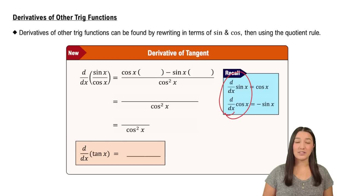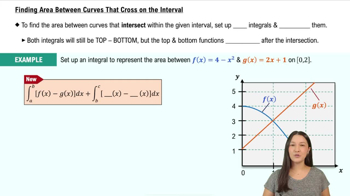Analyzing Functions from Derivatives
Answer the following questions about the functions whose derivatives are given in Exercises 1–14:
c. At what points, if any, does f assume local maximum or minimum values?
f′(x) = (x − 1)²(x + 2)
 Verified step by step guidance
Verified step by step guidance Verified video answer for a similar problem:
Verified video answer for a similar problem:



 7:32m
7:32mMaster Determining Where a Function is Increasing & Decreasing with a bite sized video explanation from Patrick
Start learning